The modern minimalist kitchen is the epitome of “less is more.” It’s a design philosophy that embraces clean lines, uncluttered spaces, and a focus on functionality. This style is not only aesthetically pleasing but also incredibly practical, creating a calming and efficient environment for cooking and gathering. If you’re drawn to simplicity, sleekness, and a sense of spaciousness, a modern minimalist kitchen might be the perfect choice for you. This article will provide a wealth of ideas and inspiration to help you create your dream minimalist kitchen.
The Essence of Modern Minimalist Kitchen Design
Modern minimalist kitchen design is characterized by:
- Clean Lines: Straight lines, sharp angles, and a lack of ornamentation.
- Clutter-Free Surfaces: Minimal accessories and a focus on keeping countertops clear.
- Neutral Color Palettes: Often based on whites, grays, blacks, and natural wood tones.
- Functional Design: Every element serves a purpose; there’s no unnecessary decoration.
- High-Quality Materials: Emphasis on durable, high-quality materials that will stand the test of time.
- Open Space: Often incorporates an open-concept layout, connecting the kitchen to the living or dining area.
- Natural Light: Maximizing natural light through large windows and strategic lighting design.
Key Elements of a Modern Minimalist Kitchen
Let’s break down the key elements to consider when designing your modern minimalist kitchen:
1. Color Palette
- Whites: Bright white, off-white, and creamy white are classic choices for creating a sense of spaciousness and cleanliness.
- Grays: Light gray, charcoal gray, and greige (gray-beige) add depth and sophistication.
- Black: Used as an accent color (e.g., black countertops, black hardware) or for a bold, dramatic look (e.g., black cabinets).
- Natural Wood Tones: Light-toned woods (like oak, maple, or ash) add warmth and texture without disrupting the minimalist aesthetic. Darker woods (like walnut) can be used for a more dramatic contrast.
- Subtle Pops of Color (Optional): While the overall palette should be neutral, you can introduce subtle pops of color through accessories, artwork, or a small backsplash area. Think muted tones like dusty blue, sage green, or terracotta.
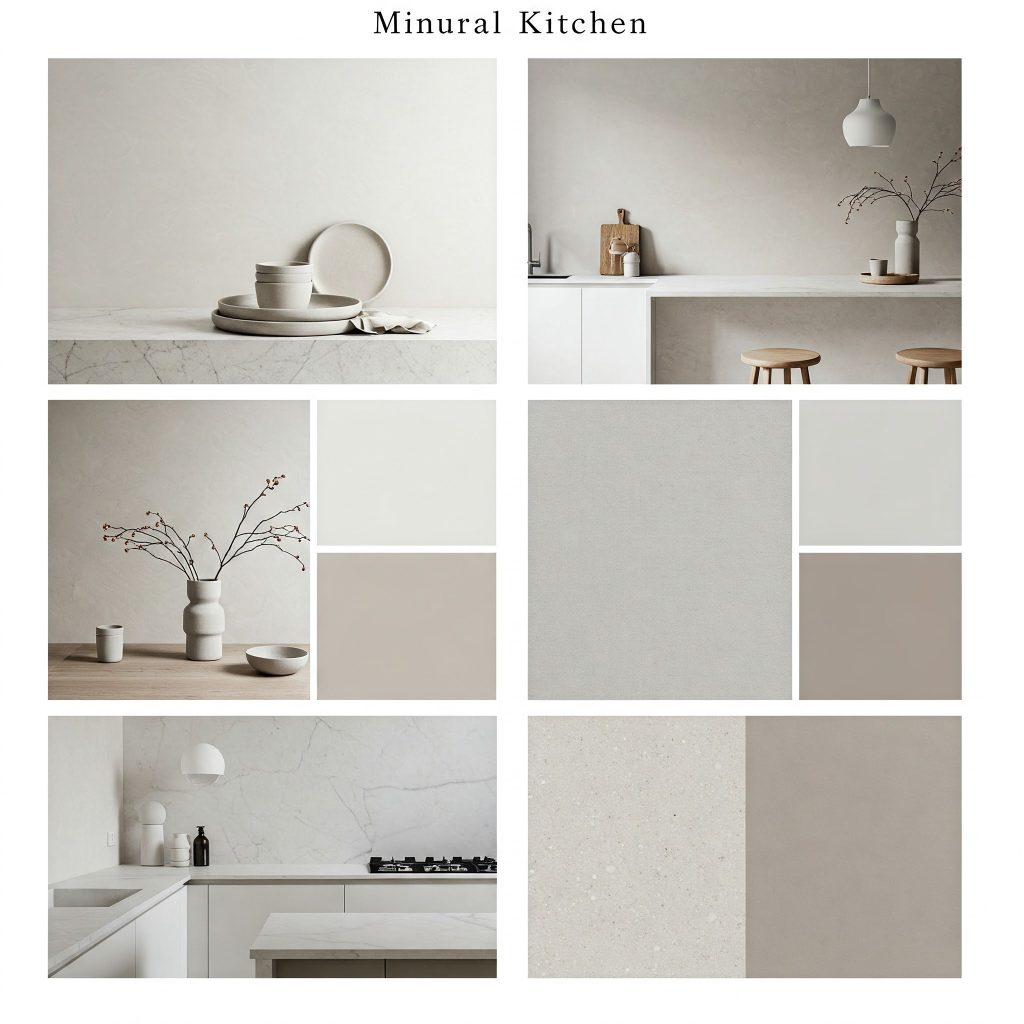
2. Cabinetry
- Flat-Panel Doors (Slab Doors): The most common choice for minimalist kitchens. They have no raised panels, frames, or ornamentation.
- Handleless Design (Integrated Handles or Push-to-Open): Creates a seamless, ultra-minimalist look.
- Minimalist Hardware (If Used): If you opt for handles, choose simple, sleek designs in matte black, brushed nickel, or stainless steel. Thin, bar-style pulls are a popular choice.
- High-Gloss or Matte Finishes: Both high-gloss and matte finishes work well in minimalist kitchens. High-gloss reflects light and can make the space feel larger, while matte finishes offer a more understated look.
- Full-Overlay Doors: Doors that cover the entire cabinet frame, creating a clean, continuous surface.
- Open Shelving (Used Sparingly): Open shelving can add visual interest, but use it sparingly to avoid clutter. Display only a few carefully chosen items.
3. Countertops
- Quartz: A durable, low-maintenance, and non-porous material available in a wide range of colors and patterns, including solid whites, grays, and blacks.
- Solid Surface (e.g., Corian): Another non-porous and durable option that can be seamlessly molded into sinks and backsplashes.
- Concrete: Offers a modern, industrial look. Can be stained in various shades of gray.
- Marble (Use with Caution): While beautiful, marble is porous and can stain easily. It requires more maintenance than other options. If used, opt for a honed (matte) finish rather than polished.
- Butcher Block (For Warmth): Adds warmth and a natural element. Requires regular sealing and maintenance.
- Stainless Steel: Durable, and hygenic.
4. Backsplashes
- Simple Subway Tile: A classic and timeless choice. White or light gray subway tile is a minimalist staple.
- Large-Format Tiles: Creates a seamless look with fewer grout lines.
- Glass Backsplash: Sleek, modern, and easy to clean.
- Solid Surface (Matching Countertop): Extending the countertop material up the wall creates a cohesive and minimalist look.
- Stainless Steel: Industrial style look.
- No Backsplash (Painted Wall): In some cases, a simple painted wall can be the most minimalist option, especially if the countertop material is already visually interesting.
5. Lighting
- Recessed Lighting (Downlights): Provides general ambient lighting without cluttering the ceiling.
- Pendant Lights (Over Island or Peninsula): Choose simple, geometric pendant lights in materials like metal, glass, or concrete. Avoid overly ornate designs.
- Under-Cabinet Lighting: Provides task lighting for food preparation and adds a subtle glow.
- Natural Light: Maximize natural light by using large windows and minimizing window treatments.
6. Appliances
- Integrated Appliances (Panel-Ready): Appliances that are designed to be covered with cabinet panels, creating a seamless look.
- Stainless Steel Appliances: A classic choice that complements most minimalist color palettes.
- Black Stainless Steel Appliances: A more modern and dramatic option.
- Minimalist Design: Choose appliances with clean lines and minimal controls.
7. Storage Solutions
- Maximize Cabinet Space: Use drawer organizers, pull-out shelves, and other storage solutions to maximize the use of cabinet space and keep countertops clear.
- Pantry Organization: A well-organized pantry is essential for a clutter-free kitchen. Use clear containers, labels, and shelves to keep everything in its place.
- Hidden Appliances: Consider hiding small appliances (like toasters, blenders, and coffee makers) in appliance garages or cabinets.
- Floating Shelves (Used Sparingly): As mentioned earlier, use floating shelves sparingly to display a few carefully chosen items.
8. Flooring
- Large-Format Tiles: Creates a seamless look with fewer grout lines.
- Concrete: A modern and industrial option.
- Hardwood (Light Tones): Light-toned hardwood floors add warmth and natural texture.
- Engineered Wood: A more durable and water-resistant alternative to solid hardwood.
- Vinyl and linoleum: Easy to maintain.
9. Accessories (Keep it Minimal!)
- Functional Items Only: Focus on items that you use regularly and that serve a purpose.
- Neutral Colors: Choose accessories in neutral colors that complement the overall color palette.
- Natural Materials: Incorporate natural materials like wood, stone, or ceramics.
- Plants (Sparingly): A few small plants can add a touch of life and color, but avoid overcrowding the space.
- Artwork (One Statement Piece): A single, large piece of artwork can add personality without cluttering the walls.
10. Layout
- Open layout
- Kitchen Island
Putting it All Together: Design Tips
- Start with a Plan: Before you begin any renovations, create a detailed plan for your kitchen layout, materials, and color palette.
- Focus on Functionality: Prioritize functionality and make sure that every element serves a purpose.
- Declutter Regularly: A minimalist kitchen requires ongoing maintenance to keep it clutter-free.
- Invest in Quality: Choose high-quality materials and appliances that will last.
- Don’t Be Afraid to Edit: If something doesn’t fit the minimalist aesthetic or doesn’t serve a purpose, remove it.
- Consider Professional Help: If you’re feeling overwhelmed, consider hiring an interior designer or kitchen designer who specializes in minimalist design.
Conclusion
A modern minimalist kitchen is a beautiful and functional space that can enhance your home and your lifestyle. By embracing simplicity, clean lines, and a focus on quality, you can create a kitchen that is both stylish and practical. Remember that minimalism is a journey, not a destination. Start with the key elements, declutter regularly, and enjoy the process of creating a space that reflects your personal style and values.

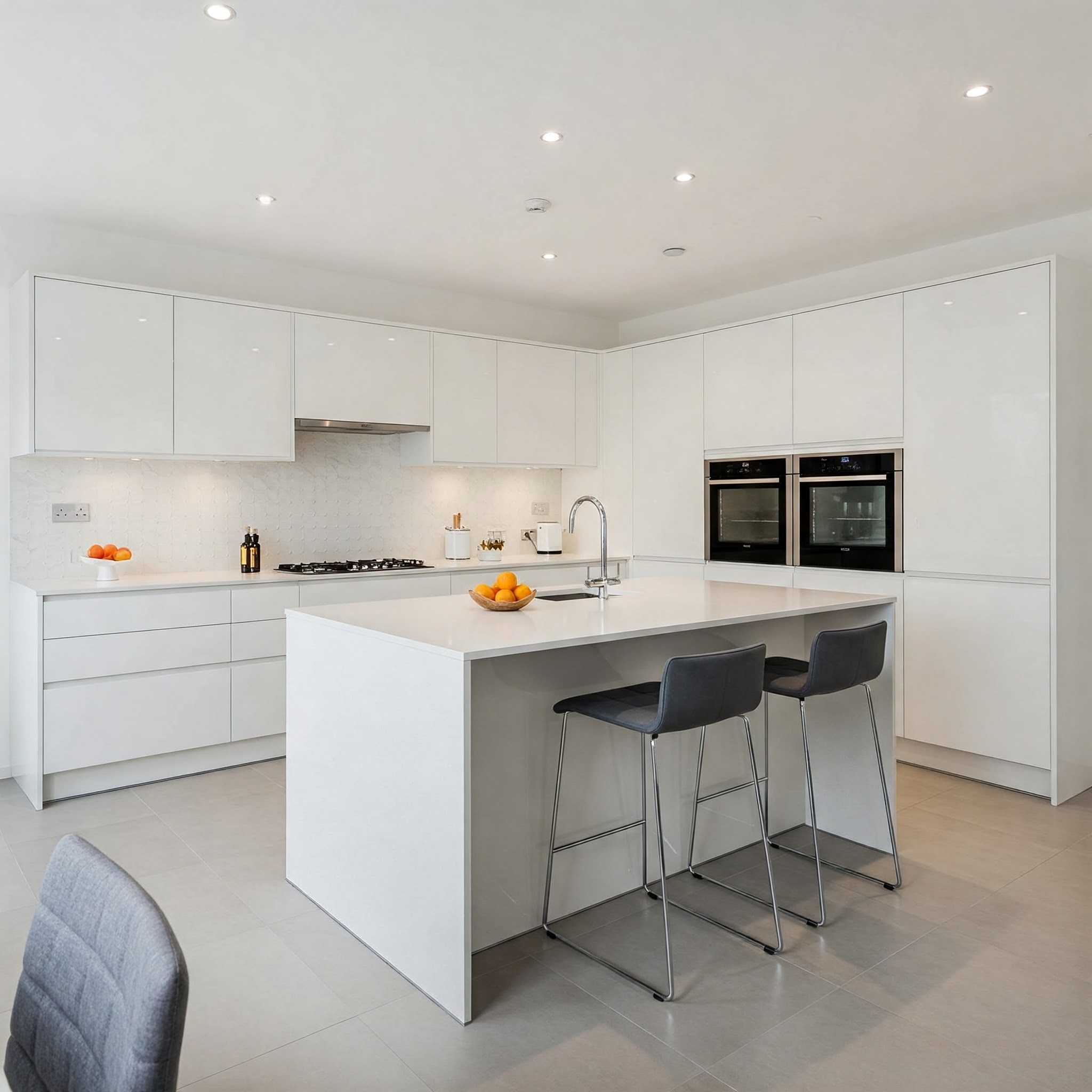
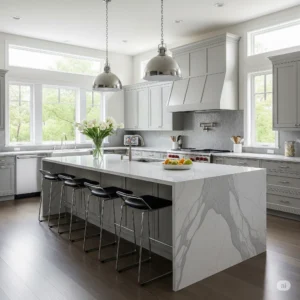
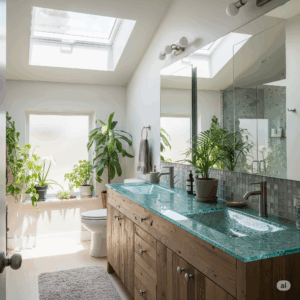
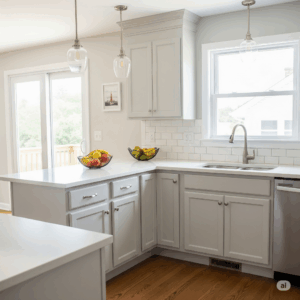
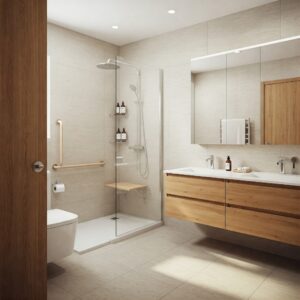
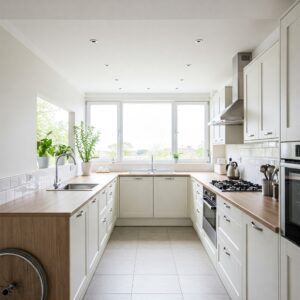
Leave a Comment